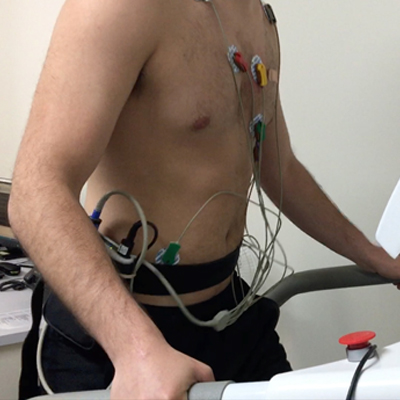
Exercise Stress Test or Stress ECG
Indications
A stress test, sometimes called a treadmill stress test or exercise test, is used to find out how well your heart functions during stress but only assesses the ECG during the test unlike stress echo (see Stress Echocardiography) which looks at the heart with ultrasound as well. The sensitivity, specificity and predictive value of Stress ECG is less than Stress Echo for assessment of ischemic heart disease (any narrowings of your coronary arteries) but it has its own indications and usefulness.
As your body works harder during exercise, it requires more oxygen, so the heart must pumps more blood. If there is any blockage in the arteries supplying blood to your heart muscle, it will cause reduction in oxygen supply and ECG will change. This means that the test is “positive”.
There may be an arrhythmia precipitated by exercise, and this test helps to unmask that.
There may also be other reasons when your doctor request Stress ECG – for example to assess fitness to drive, fitness for joining a gym or a specific exercise program, assess risk after heart attack or heart surgery. There are a whole range of reasons why this test is done.
Before the test
Usually there are few instructions given before the test, for example which medications to take and which to with hold for the test. If you haven’t been given such instructions, please check with your doctor. You don’t need to fast but it’s a good idea not to have a big meal before the test. As you will be exercising, light loose, comfortable clothing and walking shoes are preferable. Dress up so that the top is separate and can be easily removed.
Procedure
In most instances you will be greeted by our Stress Test Technologist who may take you to a preparation room. Here you will be asked to undress upto your waist. The technologist will then place ECG electrodes on your chest after rubbing skin with a light abrasive material and alcohol swab. In men with a lot of hair on their chest, they may need a light shave (don’t worry the hair will grow back!). This occasionally results in tiny bleeding spots but as all equipment and shaving blades are single use disposable material, the risk of any harm is minimal. For female patients the bra can be worn after placing the ECG electrodes.
After the ECG electrodes have been placed on the chest, you will be taken to the stress test room where you may find one other health professional – a qualified doctor to supervise the test.
In this room your ECG electrodes will be connected to the ECG monitor (seen as a continuous ECG graph on the computer screen) and you will be asked to get on to the treadmill. The treadmill starts very slow at a speed of 2.7 km/hr and an incline of 10 degrees. The treadmill will go faster and higher every few minutes depending on the protocol being used. The idea is to get your heart rate faster to its maximum which is determined by age and fitness level. Most people can exercise between 5 to 12 minutes.
 Your blood pressure will be measured few times during the test.
Your blood pressure will be measured few times during the test.
Your ECG will be monitored throughout the procedure.
The treadmill is stopped when you tell the staff to stop due to any reason (either you are fatigued and tired or you have chest pain or significant shortness of breath). The treadmill is also stopped by the doctor for other reasons.
At this stage (Recovery stage) you will be given a chair to sit and relax. ECG will continue to be monitored for another 3 to 5 minutes, and if there are no changes, it will be stopped, electrodes removed and your chest cleaned up.
Procedure
The attending doctor will look and interpret the ECG findings and write a report for your referring doctor. If the result is very abnormal, he may call and inform your doctor straightaway.
Most stress tests take about 20 minutes altogether.
Feeling a little bit dizzy after the test is normal. Shortness of breath proportional to the exercise performed is also normal. However disproportional shortness of breath and any chest pain / discomfort or palpitations etc is abnormal and should be reported to the doctor present during the test. Any drop in blood pressure is also abnormal.
Result
A normal test will most often mean that you were able to exercise as long as or longer than most people of your age and gender. You also did not have symptoms or concerning changes in blood pressure and/or your ECG. A normal result means that blood flow through the coronary arteries is probably normal.
The interpretation of your test results depends on the reason for the test, your age, and your history of heart and other medical problems.
The report will be sent to your doctor who is the best person to discuss the result.
Our cardiologists may need to rule out respiratory or sleep conditions affecting your heart. To do so, our respiratory and sleep medicine partner, Manse Medical, will contact you to see one of their specialists.
Risks
Stress testing is considered very safe, with a very small ( 1 in 10000) risk of death and a very small (2-3 in 10000) risk of heart attack or cardiac arrest. The doctor requesting this test has weighed up these risks before ordering the test.
